Introduction to UV photography compatible lenses
As explained in the presentation of UV photography, not all lenses can be used with UV transmitting bandpass filters because of anti-UV coating applied on their elements. UV-capable lenses can be divided into 3 categories:
- Entry level lenses: cheap lenses with simple optical formula. These lenses are easy to find and do not need an extra adapter.
- Old lenses: lenses used in film photography, with thin or no coating. These lenses are very cheap and require a M39 or M42 adapter. They are fully manual and well-built.
- Enlarging lenses: these lenses are used in enlargers to produce prints from films. They are a bit hard to find but are cheap and have the best performance in term of ultraviolet transmission. This kind of lenses will also require focusing helicoid adapter as they do not have a focus ring.
These 3 categories have one similar point: they are all cheap. Indeed, each UV-capable lens tested in this article will not cost more than 150$, with a mean price of 70-80$. As a comparison, professional dedicated UV lenses made of quartz have the following prices:
- Nikon AI-S UV 105mm f/4.5 : Nikon F-mount, Ø 52mm, manual focus, hard to find, ~6000$
- Jenoptik 60mm F/4 macro : Nikon F-mount, Ø 52mm, manual focus, still on sale, ~5750$
- Jenoptik 105mm F/4.5 : Nikon F-mount, Ø 52mm, manual focus, still on sale, ~6000$
This article will present the test of 8 lenses for use in UV photography:
UV-capable lenses we use in UV photography for testing:
- 35mm lenses:
- Nikon 35mm F/2.5 Series E : Nikon F-mount, Ø 52mm, manual focus, easy to find, ~110$
- Optomax 35mm F/3.5 : M42 mount, Ø 46mm, manual focus, hard to find, ~50$
- Soligor 35mm F/3.5 : M42 mount, Ø 46mm, manual focus, easy to find, ~40$
- 50mm lenses:
- Nikon AF 50mm F/1.8D : Nikon F-mount, Ø 52mm, auto focus, still on sale, ~130$
- Nikon 50mm F/1.8 Series E : Nikon F-mount, Ø 52mm, manual focus , easy to find, ~80$
- Steinheil 50mm F/2.8 : M42 mount, Ø 49mm, manual focus, hard to find, ~100$
- Yongnuo 50mm F/1.8 : Multi-brand mount, Ø 52mm, auto focus, still on sale, ~50$
- Canon EF 50mm f/1.8 STM lens
- 105mm lenses:
- Nikon EL 105mm F/5.6 : M39 mount, Ø 34.5mm, no focus ring, hard to find, ~150$
Lenses for UV photography – comparison
Part I: UV transmission performance
In this part, an UV torchlight with an inside 365nm Nichia LED is placed in front of a full-spectrum camera. Then a picture for UV photography is taken with each lens tested to show the UV light transmission through it. The parameters are not changing between each shot:
-
- Equipment:
- Canon 6D with full-spectrum conversion
- Tested lenses
- Kolari Vision UV transmitting bandpass filter
- Equipment:
- Jaxman U1 UV torchlight
- EXIF: 1/200s, F/8, 100iso
The goal here is to show the maximum level of UV signal coming on the sensor with the configuration given below. Here are the results:
- 35mm lenses:
- Nikon 35mm F/2.5 Series E
-
- Optomax 35mm F/3.5
-
- Soligor 35mm F/3.5
Here, the Optomax and the Soligor have really close performance, while the Nikon has a lower capacity to transmit UV light.
- 50mm lenses:
- Nikon AF 50mm F/1.8D
-
- Nikon 50mm F/1.8 Series E
-
- Steinheil 50mm F/2.8
-
- Yongnuo 50mm F/1.8
Here the Steinheil 50mm F/2.8 appears to have the best performances. Both Nikon D and E have close results with a small advantage for the D version. Finally, the Yongnuo 50mm F/1.8 has the worst theoretical performances.
105mm lenses:
-
- Nikon EL 105mm F/5.6 :
Despite the use of a focusing helicoid adapter, the transmission of UV light is important through this particular lens.
Part II: test in practice
In this part, all the lenses have been used for outdoor and indoor shootings with the UV transmitting bandpass filter of Kolari. Now than the theoretical performance has been tested, it is time to evaluate the concrete performance of each lens in term of exposure, contrast and sharpness for UV photography.
Outdoor test
For the outdoor test, a cloudy day in the end of winter was chosen. The UV rate was the lower possible, allowing to use the UV transmitting bandpass filter of Kolari in the worst UV condition. This test shows that even without hard sunlight, UV portrait is still possible. Moreover, it informs about the worst adjustments you would have to do to shoot in UV. This way, you are assured to make better adjustments than those of this test.
For each lens tested, the sensibility was fixed at 1600iso and the aperture was adjusted to obtain the same exposure and the best sharpness for a shutter speed faster than 1/6s. This limitation is the maximum shutter speed allowing neat static portrait using a tripod.
- 35mm lenses:
- Nikon 35mm F/2.5 Series E : 35mm, F/2.5, 1600iso, 1/6s
- Optomax 35mm F/3.5 : 35mm, F/3.5, 1600iso, 1/10s
- Soligor 35mm F/3.5 : 35mm, F/3.5, 1600iso, 1/10s
The best shot at 35mm is given by the Soligor, which allows the best contrast in the center and the best sharpness. A large amount of vignetting is due to the wide aperture required by the low UV rate.
- 50mm lenses:
- Nikon AF 50mm F/1.8D : 50mm, F/4, 1600iso, 1/6s
-
- Nikon 50mm F/1.8 Series E : 50mm, F/4, 1600iso, 1/6s
-
- Steinheil 50mm F/2.8 : 50mm, F/5.6, 1600iso, 1/8s
-
- Yongnuo 50mm F/1.8 : 50mm, F/4, 1600iso, 1/8s
Contrary to 35mm lenses, here all 50mm lenses are really close in term of contrast and shooting parameters. These results relativize the previous theoretical comparison as the Yongnuo 50mm lens is offering the same performances than the two Nikon 50mm lenses. The Steinheil 50mm keeps offering the best transmission to reach a much detailed portrait.
- 105mm lenses:
-
- Nikon EL 105mm F/5.6 : 105mm, F/5.6, 1600iso, 1/6s
No challenger against the Nikon EL 105mm, which gives maximum sharpness even wide opened.
Indoor test
The indoor test was realized in a studio using professional Broncolor strobes. Contrary to the outdoor test, here the setup is fixed to show the difference of exposure of each lens.
-
- Equipment:
- Canon 6D with full-spectrum conversion
- Tested lens
- Kolari Vision UV transmitting bandpass filter
- Equipment:
- 1x Broncolor Pulso G 3200J
- 2x Broncolor Picolite 1600J
- EXIF: 1/100s, F/5.6, 1600iso
- 35mm lenses:
- Nikon 35mm F/2.5 Series E : 35mm, F/5.6, 1600iso, 1/100s
- Optomax 35mm F/3.5 : 35mm, F/5.6, 1600iso, 1/100s
- Soligor 35mm F/3.5 : 35mm, F/5.6, 1600iso, 1/100s
As a result, Soligor still gives the best shot at 35mm.
- 50mm lenses:
- Nikon AF 50mm F/1.8D : 50mm, F/5.6, 1600iso, 1/100s
-
- Nikon 50mm F/1.8 Series E : 50mm, F/5.6, 1600iso, 1/100s
-
- Steinheil 50mm F/2.8 : 50mm, F/5.6, 1600iso, 1/100s
-
- Yongnuo 50mm F/1.8 : 50mm, F/5.6, 1600iso, 1/100s
This indoor comparison confirms that all 50mm lenses offer close results and are all usable with studio strobes. While the Steinheil 50mm is still the best 50mm lens.
- 105mm lenses:
-
- Nikon EL 105mm F/5.6 : 105mm, F/5.6, 1600iso, 1/100s
The Nikon EL 105mm is still usable for studio shooting to allow close and detailed portrait.
Part III: conclusion
To sum up, 50mm is the easiest focal lens to use: it is easy to find an UV capable lens for each camera brand. As a result, when adding a macro extension tube, these 50mm lenses are capable of easily shooting macro photography.
Hence, 35mm lenses are more usable for landscape photography as they require shutting down the aperture to obtain a good sharpness.
Enlarging lenses offer an impressive sharpness for close portraits, despite their rarity and the requirement of a focusing helicoid adapter.
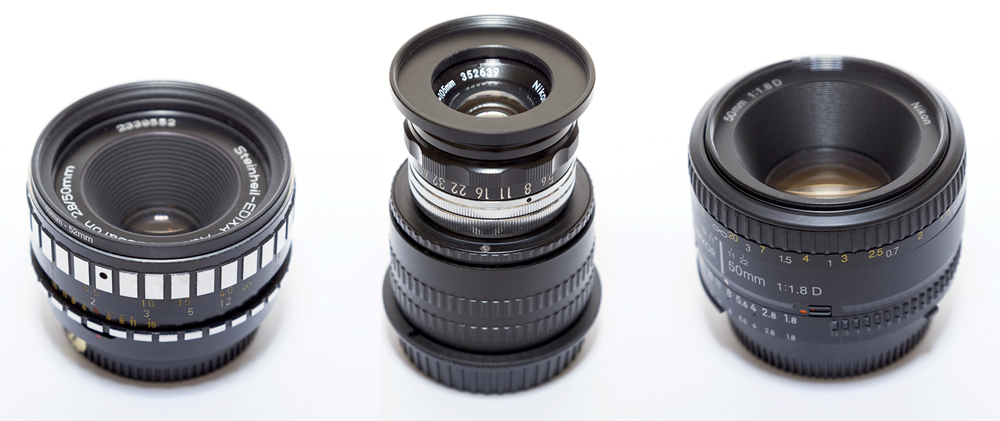








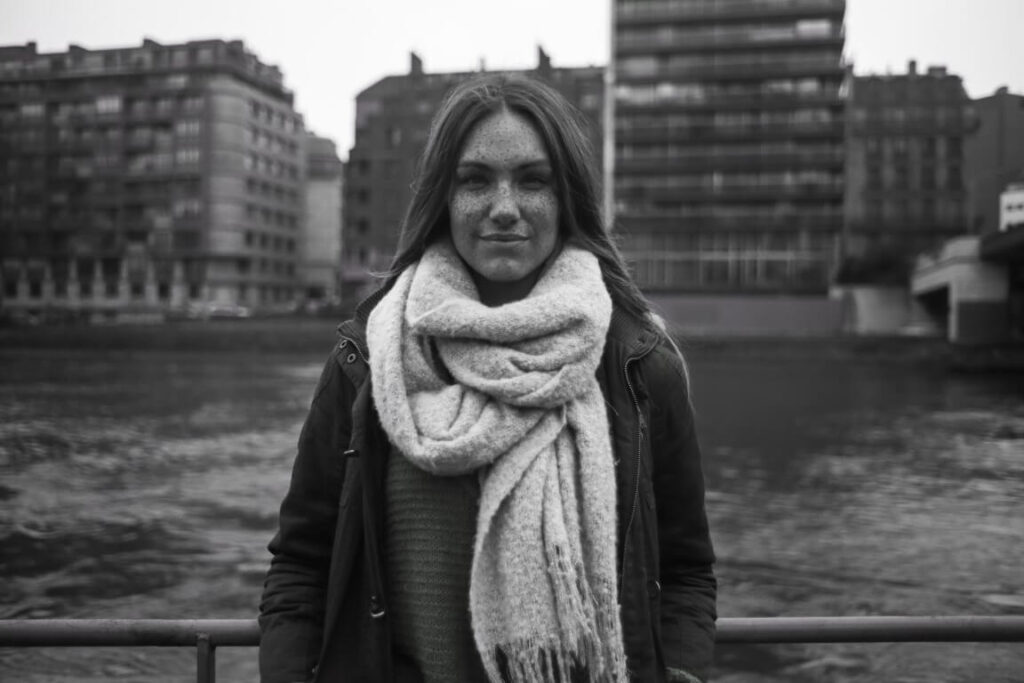
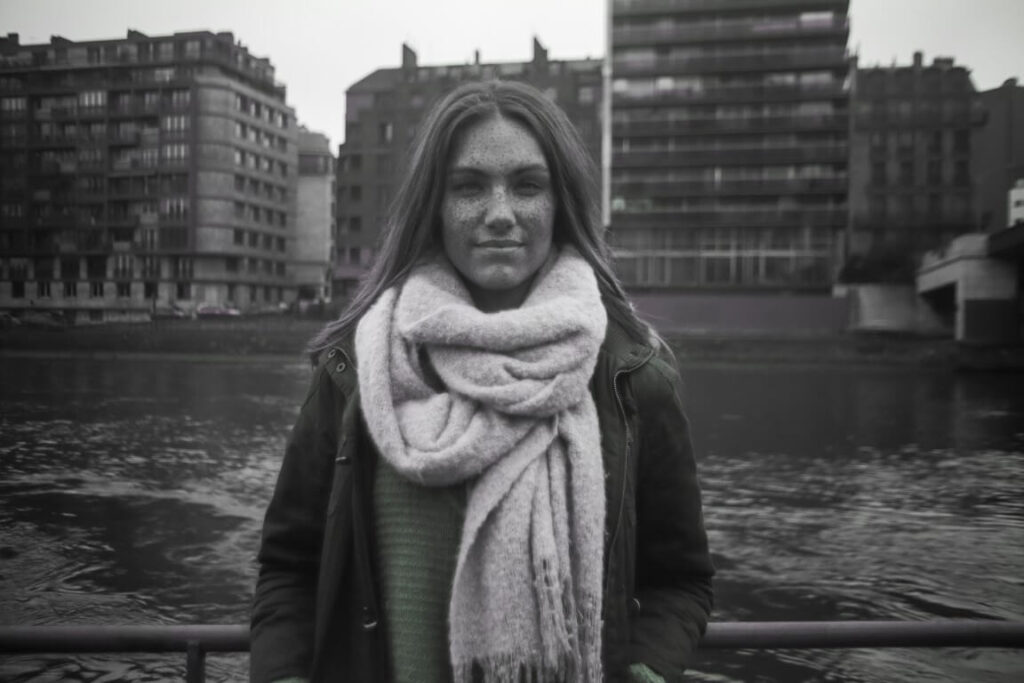
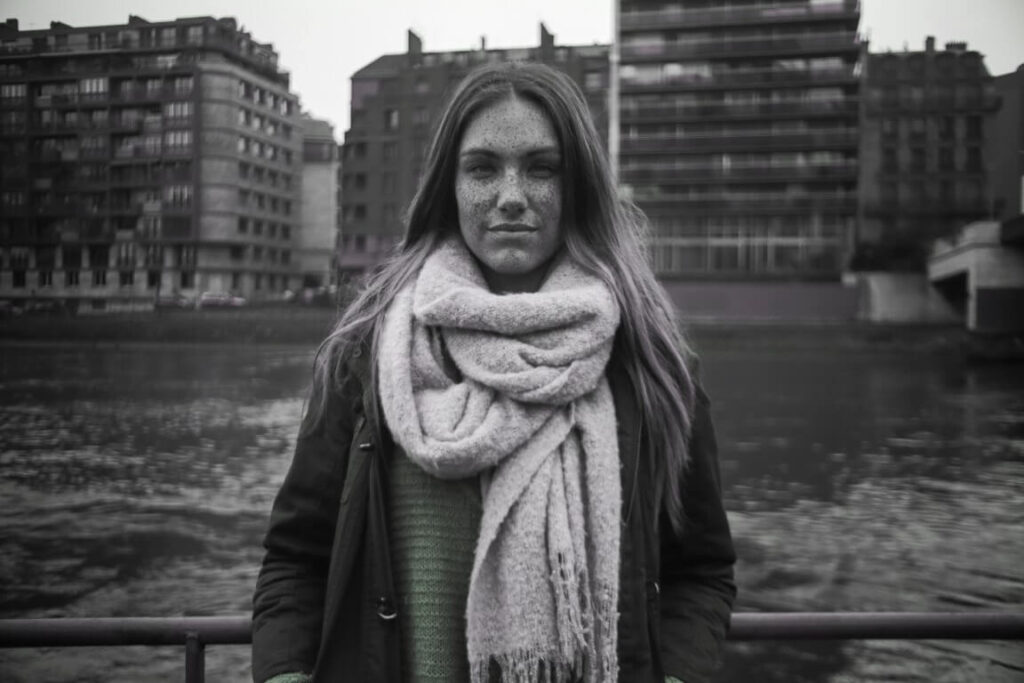
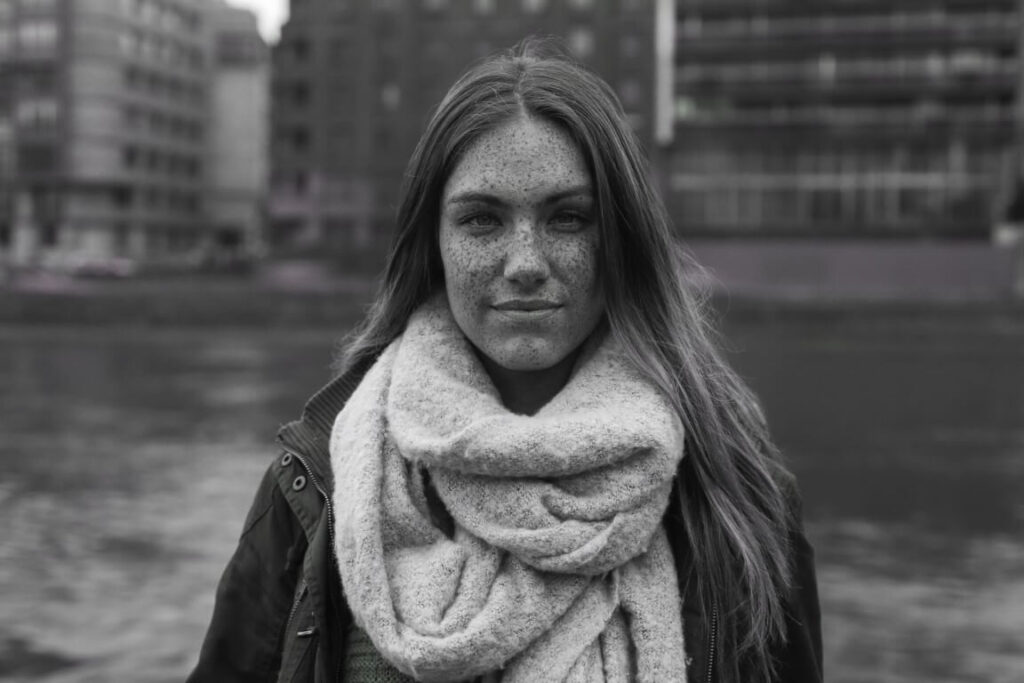
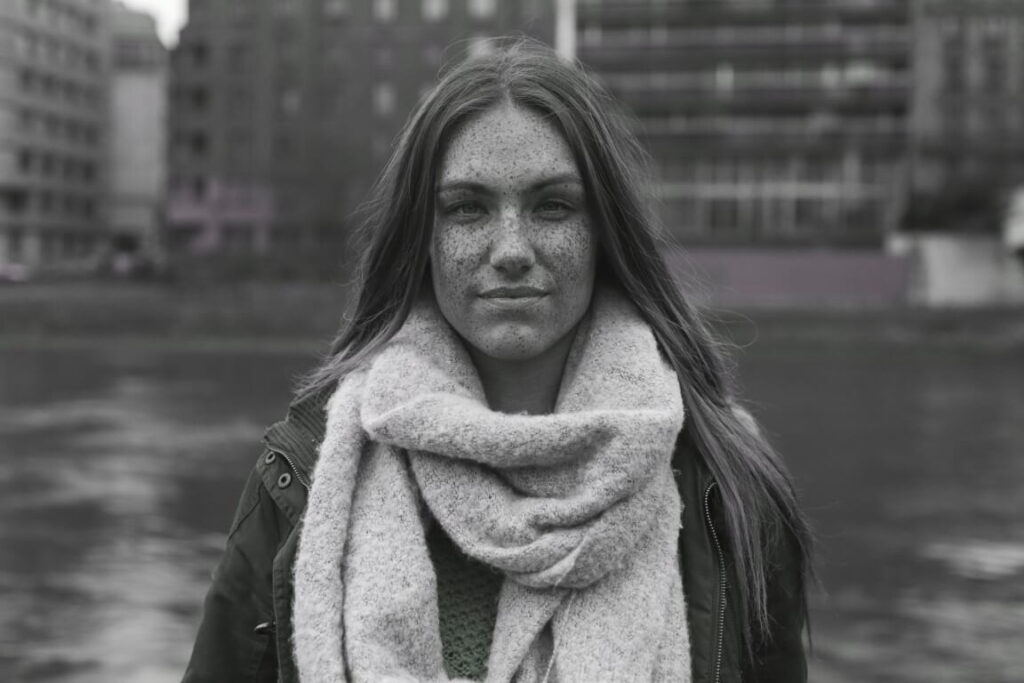
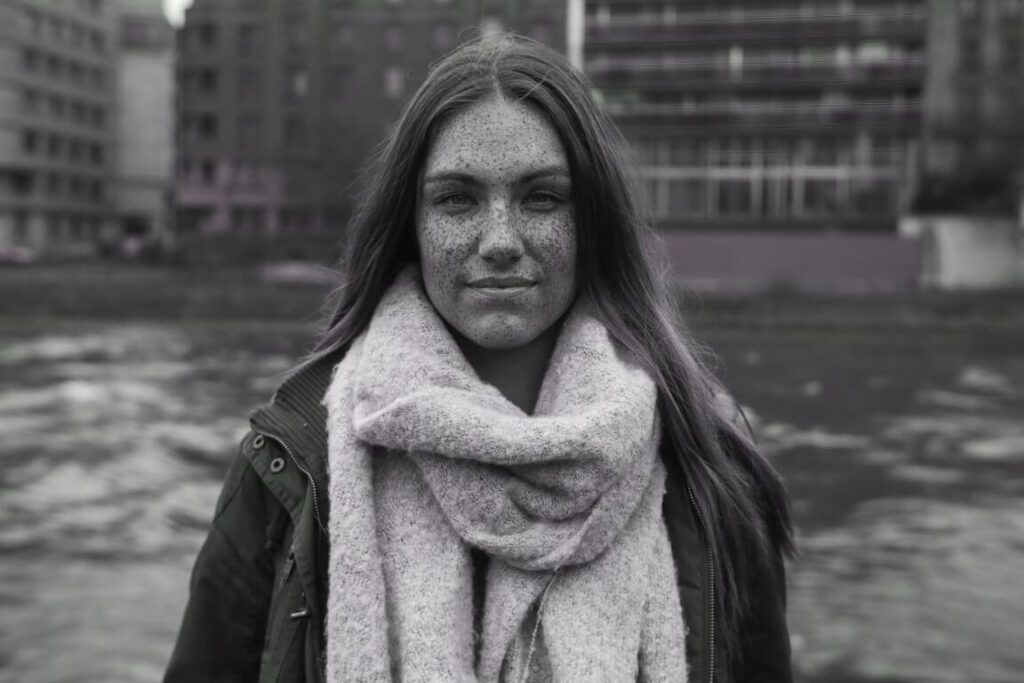
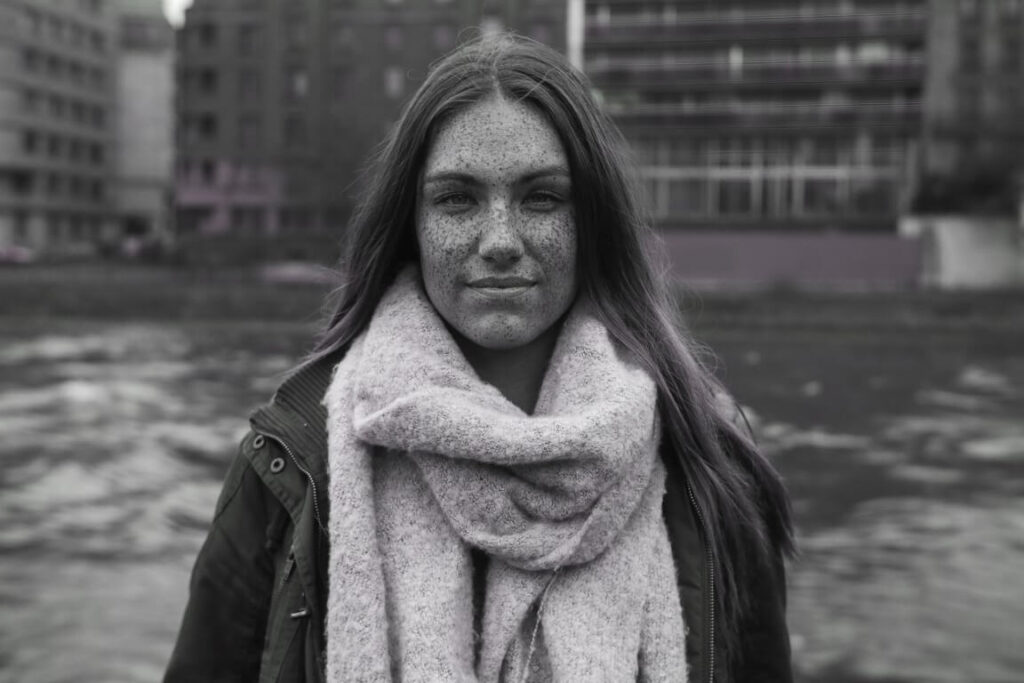
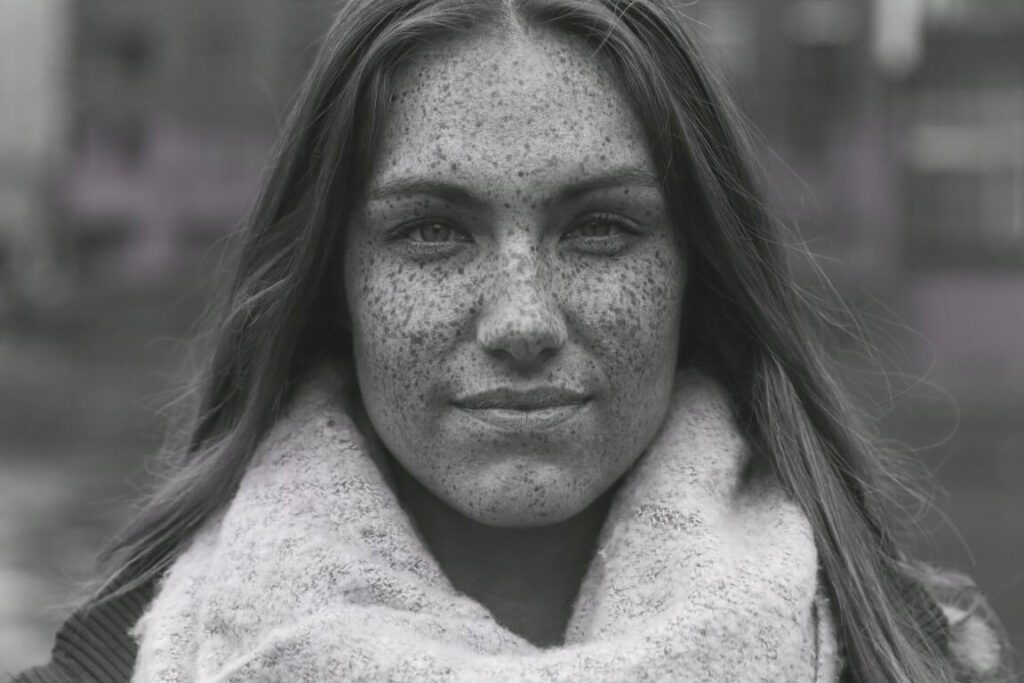
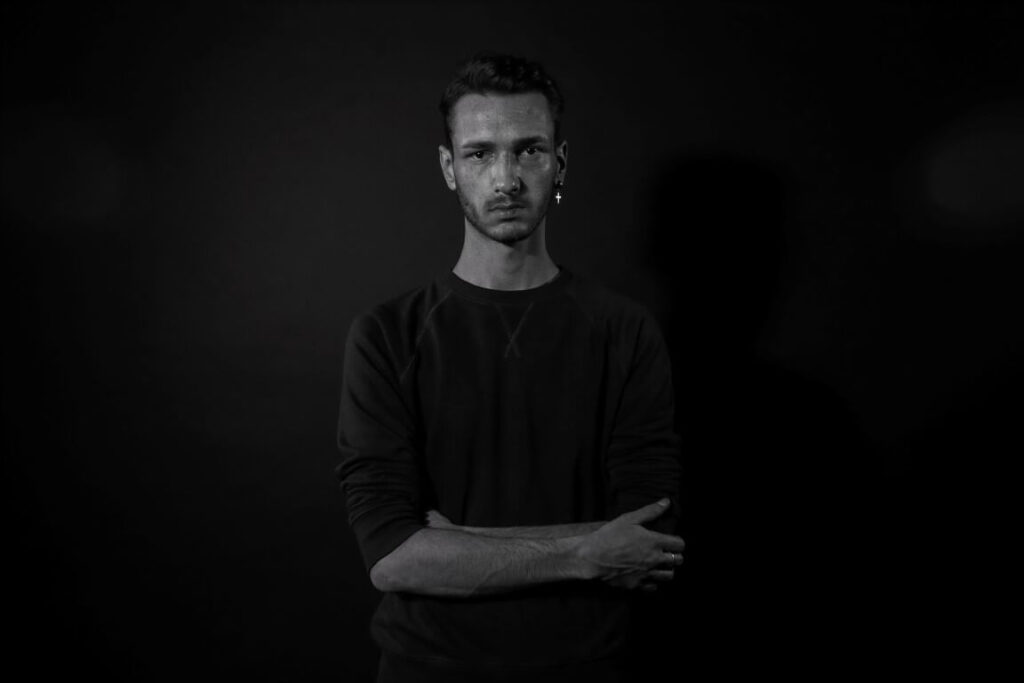
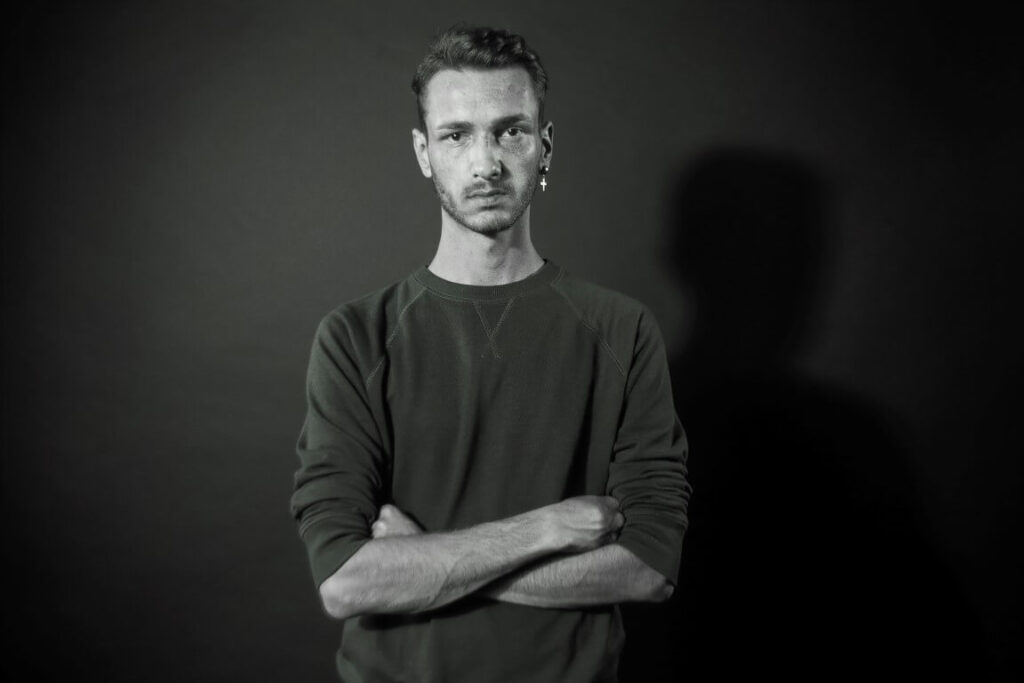
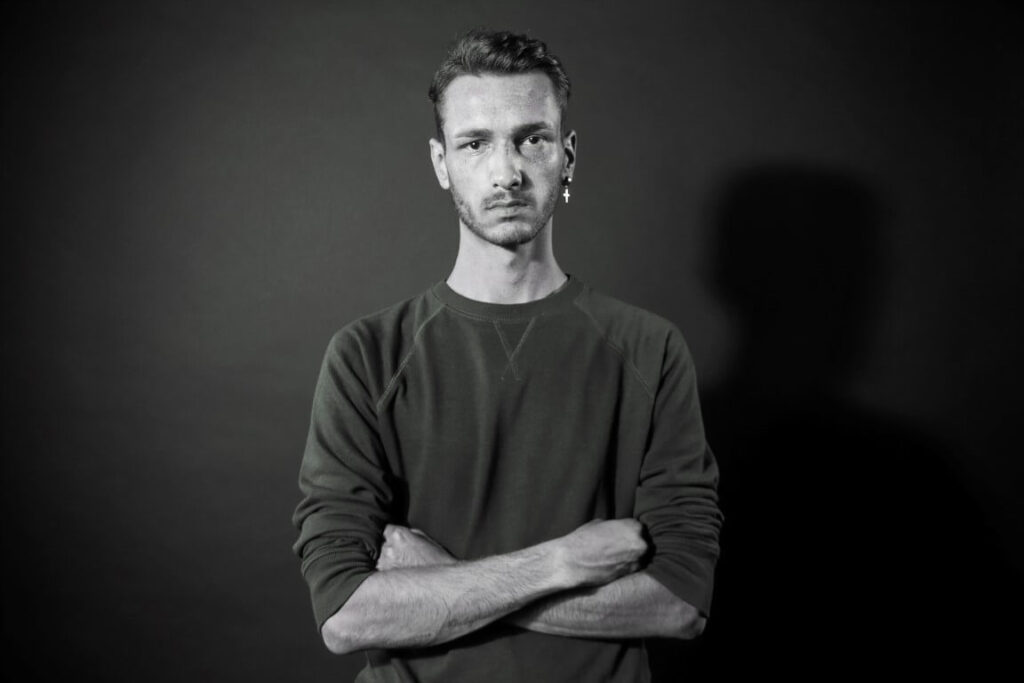
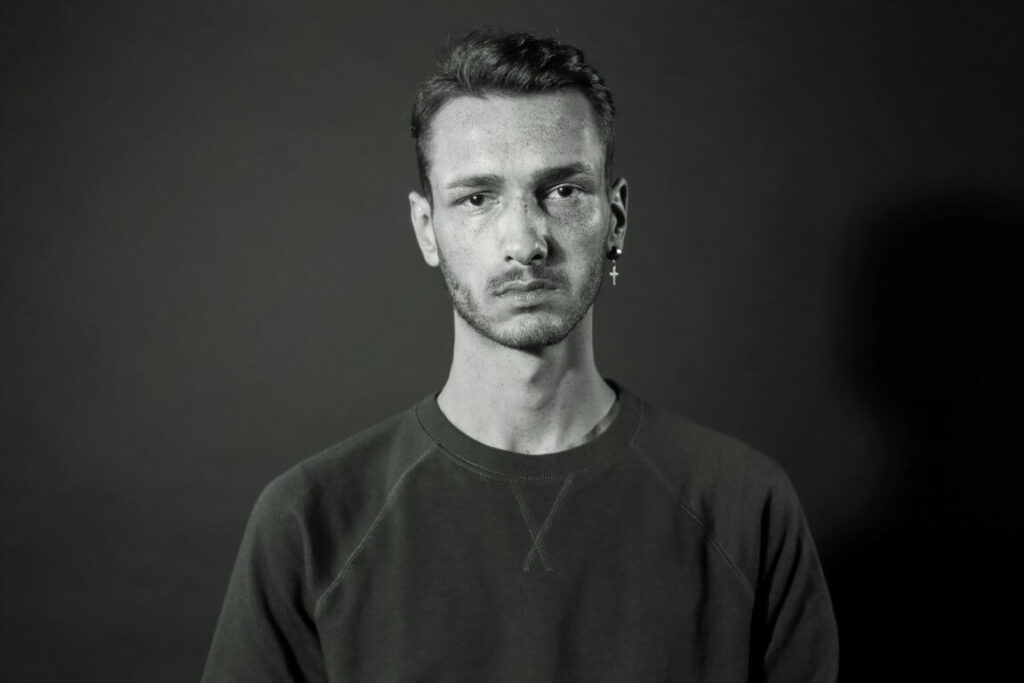
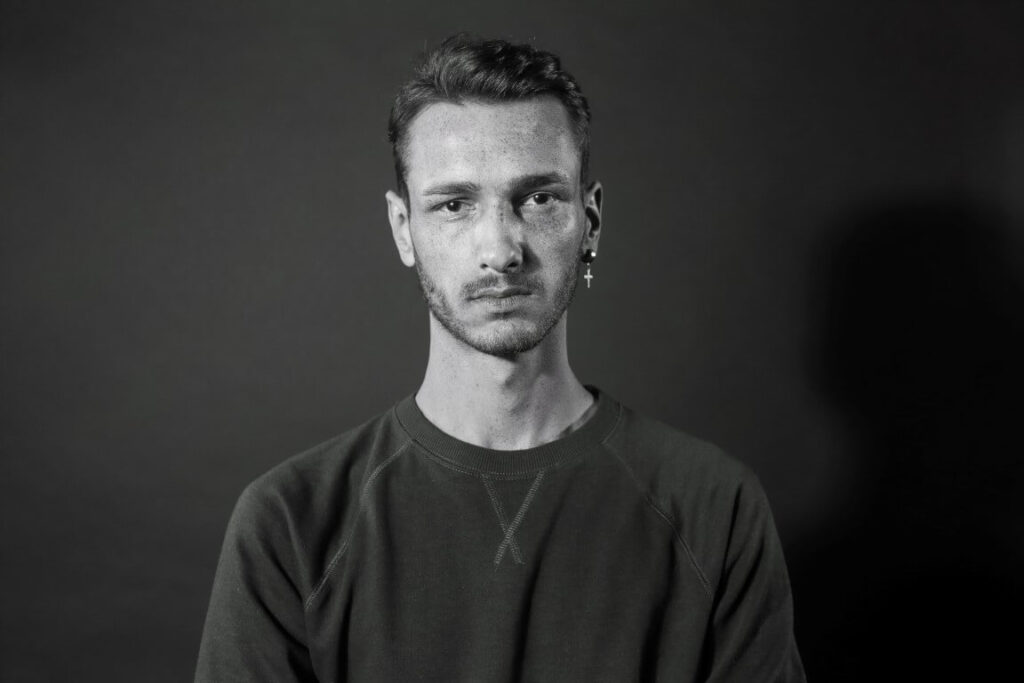
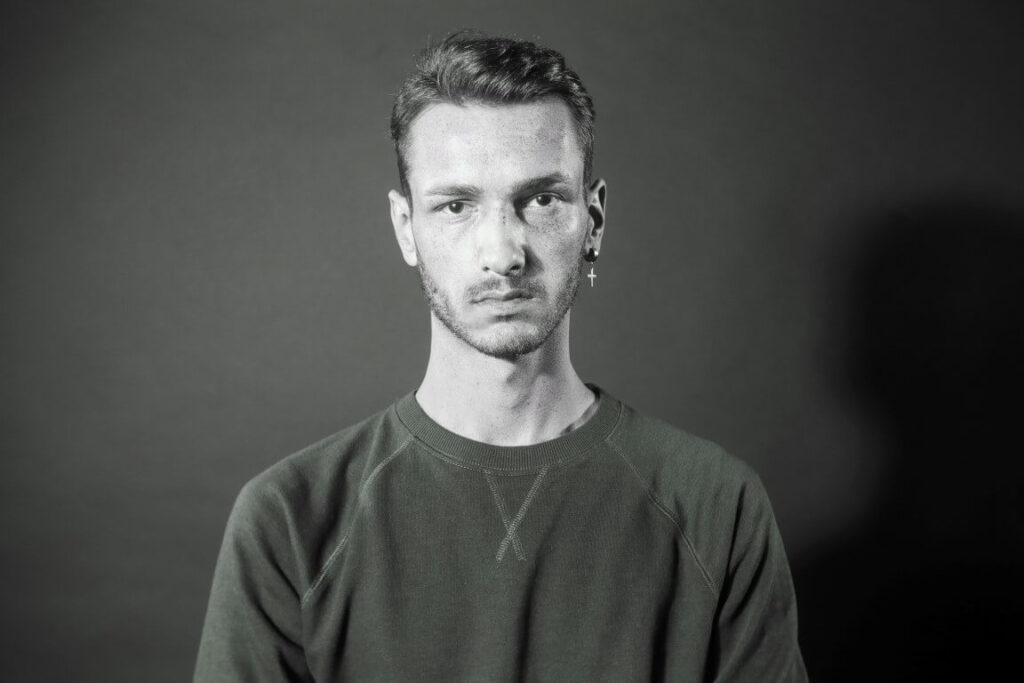
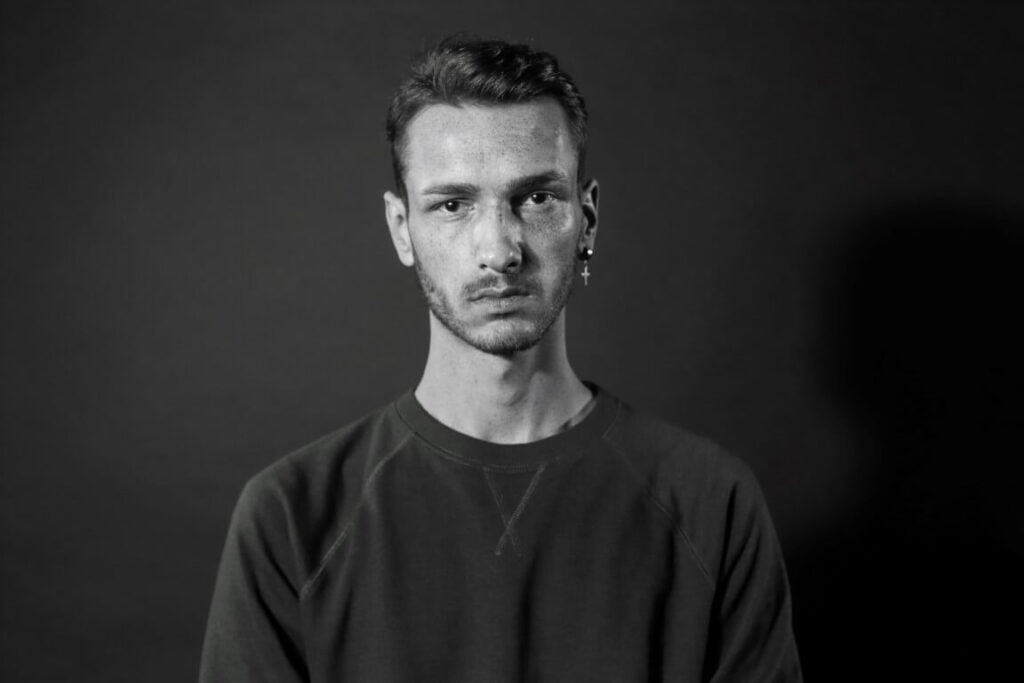
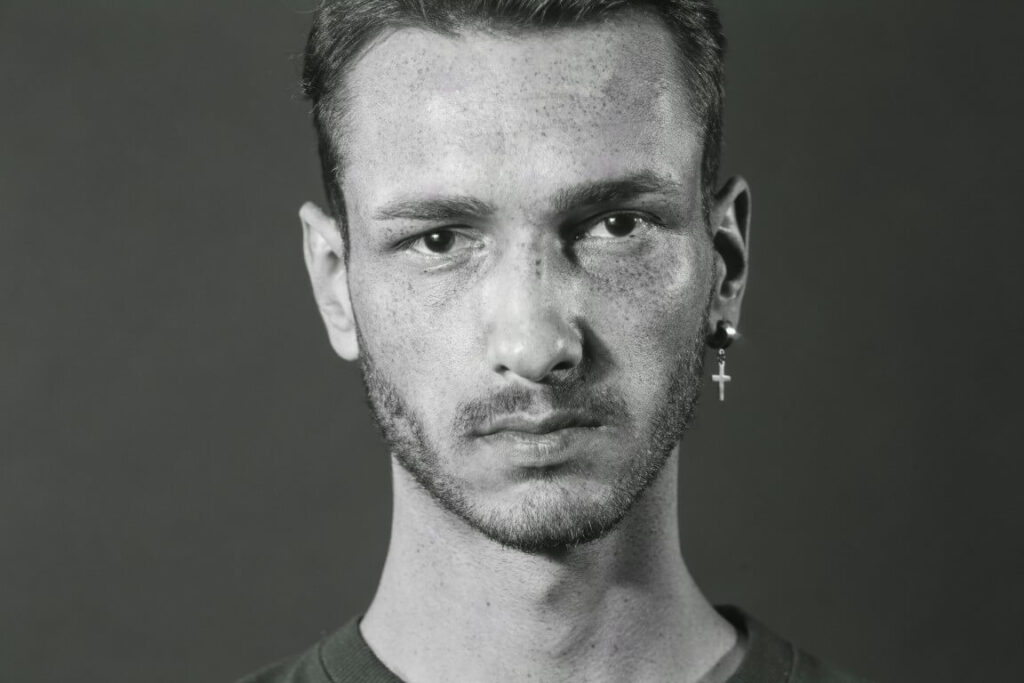





7 Responses
What helicoid adapter did you use for the Nikon EL 105mm? I just picked one up as well as one of your UV Bandpass filters and I’m having trouble figuring out what adapter I need.
I am keen to learn too..
Flange focus distance on the Nikon EL-Nikkor is 90mm for the original version. The newer one (105mm f/5.6N) has a flange focus distance of 100mm. The new model isn’t as good for UV photography.
I use a K&F concepts E to M42 adapter with the Fotasy 35-90mm helicoid. The M42 adapter is one with a standard M42 45mm flange distance, and not one of the ultra-thin filters that just adapts the physical mount.
The 45mm flange distance of M42, plus 35mm from the helicoid gives a minimum flange focus distance of 80mm. We we get infinity focus about 10mm off the stop, plus about 45mm focus throw. Reproduction ratio is about 0.4x.
Any lenses recommended for a full frame converted camera?
All the above lenses are for full frame film cameras. So they will work with any digital sensor size up to full frame.
The soligor has become rather difficult to find in good shape, at least, as of 6/21/22. The one or two I did find seem to be fetching a much higher price tag than 40$ now.
Does anyone have any idea if Lensbabies work for UV? If so, which lenses or optics?